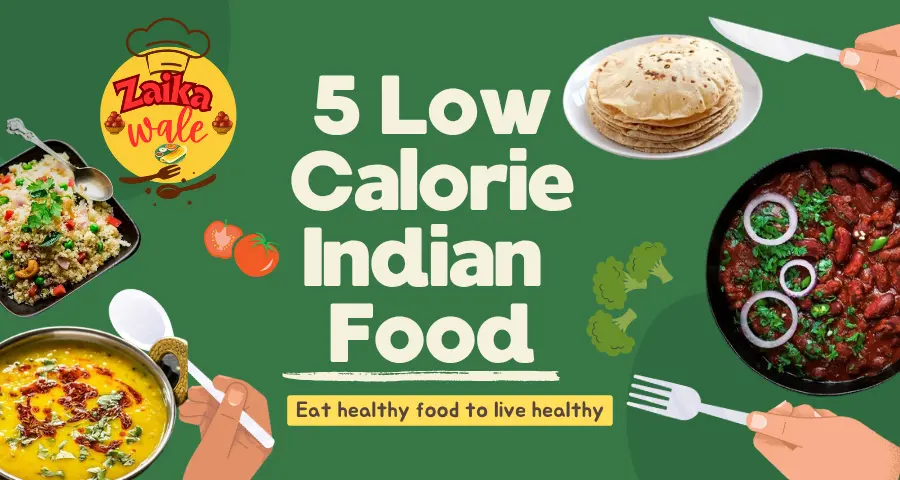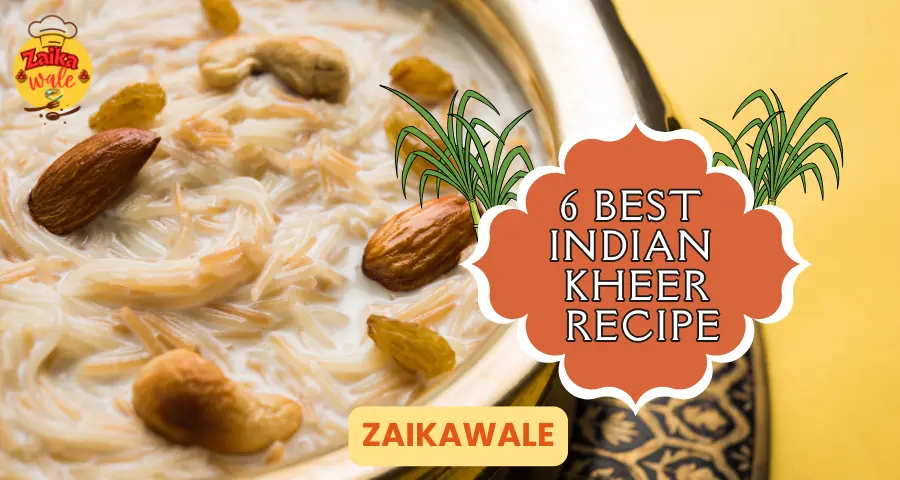Indian food is not just for filling the stomach, it is connected to the heart.
Think about it… the first bite of a hot buttered naan and makhani dal, or a little gossip with a plate of chaat in the evening – every bite of Indian food not only gives taste, but also emotions. This food is full of memories – lunch made by mother’s hands, dadi’s secret pickle, or samosa from college!
Our food has creamy gravies, crispy pakodas, and colourful thalis – but one thing is true… all these are as rich in taste as they are in calories!
If you want to maintain a healthy lifestyle, or just want to keep a check on how many calories you are eating daily, then becoming a little calorie-conscious is a must.
In this blog, I have created a simple and clear calorie chart of Indian food, which will let you know how many calories each dish has. Along with that, I have also shared some light and low-calorie recipes – which are tasty as well as guilt-free!
So let’s start this journey of taste and health!
Why Should You Track Calories in Indian Food?
You don’t need to give up your favourite food!
- Yes, seriously. You don’t need to give up your favourite biryani, pasta or chaat. You just need to be a little smart!
- If you track calories, it doesn’t mean you will stay hungry or eat boring food. It actually helps you understand a few important things:
- You learn to strike a balance between your preferred indulgence and health.
- You estimate your portion size – how much is too much, how much is right.
- Before taking every bite, you start thinking – is this a good choice or not?
- Instead of eating less, you learn to eat smart.
And the best part?
Small changes – like using less oil in cooking, or using whole grains instead of flour – all make your health better without affecting your taste.
So the next time you enjoy your favourite dish, instead of feeling guilty, just be a little mindful. It is possible to enjoy both health and taste together!
Indian Food Calories Chart (Per Serving)
Here’s a simple calorie chart for some of the most commonly eaten Indian dishes. These are approximate values for home-cooked versions:
| Dish Name | Approx. Calories |
|---|---|
| Plain Roti (1 piece) | 70–100 kcal |
| Rice (1 cup cooked) | 200–240 kcal |
| Dal Tadka (1 bowl) | 150–180 kcal |
| Paneer Butter Masala (1 bowl) | 350–450 kcal |
| Chole (1 bowl) | 280–300 kcal |
| Aloo Paratha (with ghee) | 300–350 kcal |
| Idli (2 pieces) | 120–140 kcal |
| Sambhar (1 bowl) | 120–150 kcal |
| Pulao/Veg Biryani (1 bowl) | 350–400 kcal |
| Rajma (1 bowl) | 200–220 kcal |
| Meethi Kheer (1/2 cup) | 180–220 kcal |
| Gulab Jamun (1 piece) | 150–180 kcal |
| Lassi (1 glass) | 200–250 kcal |
| Masala Dosa (1 piece) | 380–420 kcal |
| Poha (1 bowl) | 200–220 kcal |
| Upma (1 bowl) | 180–200 kcal |
| Pakora (1 medium piece) | 75–90 kcal |
| Butter Naan (1 piece) | 180–200 kcal |
Tips to Make Indian Food Healthier’
Be a little smart and you will become healthy!
Creating healthy food is not rocket science – you just need to keep small things in mind. You can take care of your health in the kitchen of your house. Here are some simple tips which you can follow easily:
- Reduce the use of oil or ghee – Taste is important, but health is even more important. Excess oil makes food oily and unhealthy.
- Stay away from meat and adopt wheat or millets – Options like whole wheat, bajra, jowar are better for your digestive system and also provide more nutrition.
- Instead of cooking, grill or steam – Tandoori or steamed dishes are not only tasty but also have less fat.
- Use toned milk or curd instead of cream – you will get richness but calories will not increase. Plus, curd helps in digestion too!
- Add more veggies – both fibre and volume will increase. Food will feel filling and light too.
- Pay attention to portion size – don’t eat more if your stomach is full. Sometimes ‘a little more’ is the problem.
Finally one simple thing: if you want to stay healthy, make smart choices. It is possible to maintain a balance between taste and health – just start from home!
5 Indian Recipes You Can Enjoy Without Guilt
When it comes to Indian food, careful eating doesn’t have to mean traditional food. The key is to pick the correct ingredients, cook them well, and watch how much you eat. These five tasty Indian recipes are both cozy and low in calories, so you can enjoy them without feeling bad about it.
1. Moong Dal Tadka – Light, Comforting & Nutritious
Moong dal tadka is the one dish that always hits the spot, especially after a long day. It’s simple, comforting, and full of protein.
What You’ll Need: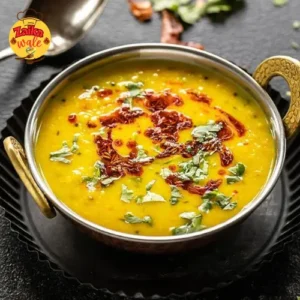
- ½ cup yellow moong dal
- 2 cups water
- 1 tsp ghee
- ½ tsp jeera (cumin seeds)
- 1-2 chopped garlic cloves
- 1 green chili (slit)
- A pinch of haldi (turmeric)
- Salt to taste
- Fresh dhaniya (coriander) to garnish
How to Make It:
- Wash the dal and boil it under pressure with turmeric and salt for 2–3 whistles.
- In a tadka pan, heat ghee and add cumin, garlic, and green chile. Let it crackle.
- Add this hot tadka to the dal that is already cooked.
- Mix, let it simmer for 2 minutes, and then add fresh coriander on top.
Enjoy it with: 1–2 soft rotis or a small bowl of rice.
Calories: Approx. 160–180 per bowl.
2. Soft Phulka Roti – Ghar Ka Swad, Guilt-Free
A soft phulka with dal or sabzi is the best thing ever, and if you make it without oil or ghee, it’s also quite easy on the stomach!
Ingredients: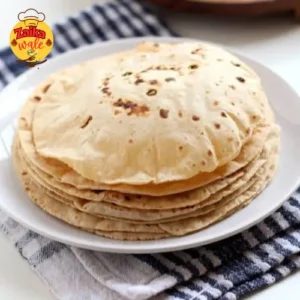
- 1 cup whole wheat atta
- Water (as needed)
- A pinch of salt (optional)
How to Make It:
- Use water to knead a soft dough and let it relax for 15 to 20 minutes.
- Make balls, then roll them out into thin circles.
- Cook on a hot tawa until both sides have light brown patches.
- Roast right on the heat to get the famous phulka puff.
Perfect with: Dal, sabzi, or even curd.
Calories: 70–90 per phulka.
3. Vegetable Upma – Healthy Breakfast, South Indian Style
Upma is a wholesome, satisfying breakfast that feels just right with fluffy suji, crisp veggies, and a hint of lemon.
Ingredients You’ll Need: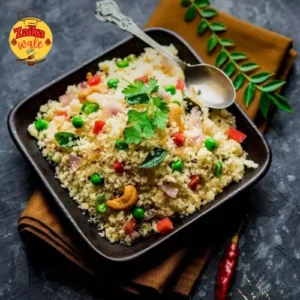
- One cup semolina (suji)
- 1 tbsp oil
- ½ tsp mustard seeds
- 1 chopped onion
- 1 green chili (chopped)
- A few curry leaves
- 1 cup chopped veggies (carrot, beans, peas)
- Salt, lemon juice
How to Make It:
- roast the suji until it is light golden brown and set it aside.
- In a pan, heat some oil and add mustard seeds, onion, green chile, and curry leaves.
- Add the chopped vegetables and simmer for a few minutes.
- Add the roasted suji carefully while stirring after bringing 2 cups of water to a boil.
- Put a lid on it and let it cook for 4 to 5 minutes. Add lemon juice at the end.
Calories: Around 200–220 per bowl.
Pro Tip: Add some roasted peanuts or cashews for crunch (just count those calories ).
4. Rajma Masala – Soul Food, But Smarter
Rajma-chawal is an amazing vibe! If you don’t add too much oil and masala, rajma can be a great source of protein.
You’ll Need: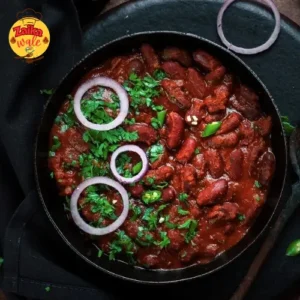
- One cup boiled rajma (kidney beans)
- 1 tbsp oil
- 1 onion (finely chopped)
- One tomato (pureed or finely chopped)
- 1 tsp ginger-garlic paste
- Spices: jeera, haldi, red chili powder, garam masala
- Salt to taste, coriander to garnish
How to Make:
- Put oil in a pan and heat it. Add cumin and cook the onion until it is golden.
- Add the ginger-garlic paste, then the tomatoes and all the spices. Cook until the oil separates.
- Put in the boiled rajma and half a cup of water. Let it cook on low heat for 10 to 15 minutes.
- Add coriander as a garnish and serve hot.
Calories: 200–220 per bowl.
Serve With: Brown rice or 1 phulka.
5. Meethi Kheer – Thodi Si Meethi, Thoda Sa Magic
You can enjoy dessert, yes. This lighter kheer will satisfy your sugar cravings without making you feel heavy.
What You’ll Need: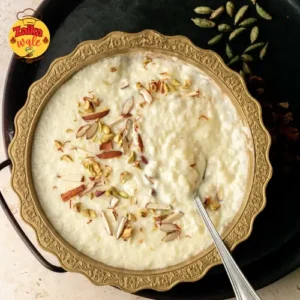
- ½ litre low-fat milk
- 2 tbsp rice
- 1–2 tsp sugar (or jaggery if you like)
- A pinch of cardamom powder
- Few chopped almonds and raisins
How to Make:
- Rinse the rice and let it soak for 10 minutes. In the meantime, boil the milk.
- Put the rice in the milk and simmer it over low heat until the rice is tender and the sauce thickens.
- Put in the sugar and cardamom and let it cook for a little longer.
- Top with chopped dried fruits and serve hot or cold.
Calories: 180–200 per ½ cup.
Mindful Tip: Avoid second servings (We know it’s tough!)
These recipes are not just about how many calories they have; they are also about balance, satisfaction, and nutrition. You may still enjoy all of your favorite Indian flavors without feeling bad about it if you make a few small changes.
So go ahead and eat well, be happy, and never give up on taste!Do you want more recipes like this? For your daily dosage of tasty, feel-good cuisine, keep checking out Zaikawale.com.
Final Thoughts
Indian food is always tasty – top in taste and emotions!
There is no doubt that Indian food is one of the most delicious cuisines in the world. Every bite brings back memories along with the taste – the dal made by mother, the kheer made by grandmother, or the hot roti and sabzi in the evening.
But as we become a little more aware of our health, a question comes to mind – “Whatever I am eating, is it right for me?”
And that is where the journey of mindful eating begins.
The good news is that you don’t have to stay away from your favourite foods – you just need to maintain a little balance. And this Indian food calorie chart can be a great start in this direction.
So let’s go…
Whether it’s a bowl of piping hot dal, or soft roti straight from the tandoor, or sometimes a spoonful of sweet kheer – enjoy it all!
Just remember one thing – balance is the real taste.
Tips for Mindful Eating Without Sacrificing Taste
Plan your plate: Try to include protein (dal, paneer, rajma), fiber (sabzi, salad), and good carbs (roti, brown rice) in each meal.
Portion control is the secret — one more paratha may seem tempting, but it is not necessary.
Don’t ignore the sweet tooth — just pay attention to quantity and frequency.
Hydration is also important — sometimes hunger and dehydration get mixed up.
Mindful Eating Ka Simple Mantra:
“Eat everything, but think before doing anything.”
Keeping a little track of what is going on in your plate not only improves your health, but also doubles your guilt-free enjoyment.

